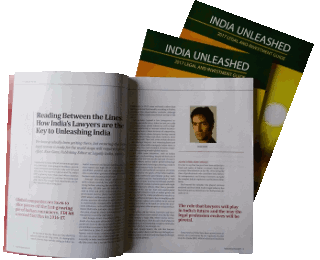
M&A Overview
What is US’ investors’ common perception of India?
Despite these positive signals, India suffers from a legacy perception of the license Raj. Investors face a host of legal and regulatory risks, including foreign exchange, foreign investment restrictions, and corruption. Foreign investments into India are subject to the FDI Policy of the Government of India and the provisions of the Foreign Exchange Management Act (FEMA).
Whereas a USA business can be formed digitally within minutes at minimal cost, starting an Indian company and conforming to banking and tax regimens appear a daunting, time-consuming and costly obstacle course to American investors. In most cases, FDI is permitted without prior governmental approval of the Government, but uncertainty remains as to what is automatically permitted and what is not. FEMA prohibits most foreign exchange transactions entered into by Indian companies, whether foreign or local, unless such transactions are approved by the Reserve Bank of India.
Business in both countries will benefit from efforts to streamline and ensure cross-border business on fair and reciprocal terms that provide certainty and simplicity in enabling the two largest democracies in the world to benefit their populations.
What would you say are the great differences between US and India deal-making? Can things be lost in translation? If so, what are some simple things to consider for Indian companies and lawyers with US advisers?
A big difference is due diligence. USA M&A practice virtually takes for granted the reliability of financial statements, with audited results and footnotes about unusual matters. Reliance on an Indian company’s financials is insufficient to understand a target’s true financial picture. Indian states lack uniform laws and consistent enforcement, and there is inadequate publicly available information. Most companies in India are family owned or run. Many lack control systems common in the USA and have not adopted auditing standards in line with USA practice.
Prospective Indian investors should understand the USA’s heavy regulatory regime underpinning due diligence efforts, including cybersecurity, data protection, CFIUS, FCPA compliance and other rules. Indian investors should seek qualified tax advice and work with their Indian counsel and USA counsel familiar with cross-border acquisitions.
Which sectors do you see as most promising for US-India deals in the coming years?
Beyond IT and BPO services, manufacturing, chemicals, consumer products, healthcare, financial services, energy and infrastructure are promising sectors for US-India deals.
India has a strong and immediate need for improved housing, healthcare, and access to sanitary facilities, which will drive demand for domestic manufacturing of petrochemicals, plastics, equipment and construction materials.
The country’s increasing middle class will demand an increasing array of consumer products. India has an underdeveloped credit market. Many households are unbanked, presenting a significant opportunity for the financial services sector. Indian opportunities in the USA mirror such reciprocal needs, as India can both penetrate a much larger market for products and services while globalizing and upgrading its technology and business methods.
What are the biggest recent regulatory changes to U.S. cross-border M&A, and do these impact India?
The Political Climate:
The Trump Presidency presents prospective challenges and opportunities for Indian business. In early 2017 as this is written, it is too early to know if election rhetoric will stifle or loosen cross-border business. One can predict an increasing need to be present in each country’s markets. Both the Modi Government and the Trump Administration aim to boost in-country production of goods and services. With globalization an inexorable force, we predict a growth in localization of production and market presence.
Trade may decline, but business expansion across borders and into new territories will increase. This augurs well for cross-border investment. If USA proposals for a “border adjustment tax” become tax law, there will be a push for in-country production of goods and services – in both India and in the USA. Businesses should watch carefully as India and the USA conduct bilateral trade talks that could unleash rather than stifle cross-border investment and M&A activity. Lower business taxes in the USA, virtually a certainty in some ultimate form in 2016, will make USA acquisitions more attractive, but could also increase sale prices.
While not an immediate issue, Trump’s protectionist and national security policies could present challenges for Indian investors in the U.S. Most controversial rhetoric has focused on China and Mexico, and India’s trade surplus with the USA is substantially less than for many other countries. India’s off-shore labour force could threaten Trump’s plan to create more jobs for U.S. citizens, through a reduction in visas permitted for Indian residents to move to the USA for work. If so, this means acquisitions will increase in popularity as a means of establishing home footprints in each place.
FDI – India and USA: Mostly, but not only, a one-way street Since the Modi Government took power, Foreign Direct Investment (FDI) from the USA to India rose about 500%. Indian FDI into the USA grew at a lesser rate, but was also sharply up. India became the fourth fastest growing source of FDI into the USA, including in sectors beyond IT where major FDI into the States began. Much of this was not from acquisitions, but through a steady increase in parent company investing and expanding into foreign markets.
This remarkable dual expansion of capital flows was accompanied in 2016 by a decrease in India in-bound M&A transactions and an uptick in out-bound global Indian M&A transactions, including in the USA. Most notable was the acquisition of U.S.-based HealthPlan Services by India’s Wipro Limited for USD 460 million.
Formal trade figures are inherently incomplete and misleading. Mauritius and Singapore appear as the vastly dominant investors in India, but this is due to their holding company advantages, with underlying capital sources being from elsewhere. Indian investors remain relatively inactive in USA M&A. The principal factor is most likely valuations. Many mid-market Indian companies we advise seek acquisition of distribution channels and manufacturing at prices reasonable from an Indian perspective but much less than USA owners would consider adequate for a sale.
Continuing Indian annual restrictions on outbound capital by individuals block a surge in global outbound investment. As residents of the world’s fastest growing economy, Indian companies have enormous room to grow within India, making it a challenge to risk capital in unchartered markets. The USA is perceived as distant and competitively challenging compared to closer less developed locations. And yet, Indian companies correctly perceive the USA as the world’s largest, most sophisticated consumer market and a reliable place to do business, so reciprocal growth in FDI continues.
Labour Law & US Talent: Coming & Going
What are the first questions you ask from a labour law perspective in a US-India / India-US deal?
The first questions to consider are who are the key personnel and what kind of deal is this? If the acquiring company and the target company will be closely integrated, or if the deal involves a parent setting a new subsidiary operation in a foreign country, then often key management personnel will travel or relocate to the other country to facilitate the deal and manage operations. Relocation of key personnel involves many considerations, including immigration, tax, compensation and benefits.
Another key question is who will handle personnel matters and labour compliance in the foreign country. This is critical when establishing new operations in a foreign jurisdiction, or acquiring a relatively small or less sophisticated foreign entity. There are vast differences in the labour laws and customs of the US and India, and you must have experienced Human Resources personnel and legal guidance. Larger more sophisticated target entities can be expected to have robust personnel departments familiar with local laws, but you still must perform due diligence during the acquisition.
What kind of US labour laws apply to staff in India?
Few US labour laws reach outside of the USA. Anti-discrimination laws may apply to American citizens working abroad, but only if they are employed by a USA company abroad or work for a foreign company “controlled by” a USA company. Control does not simply mean that the foreign company is a subsidiary of the USA company, but requires a more direct connection between the business of the two companies.
Under certain circumstances the USA’s anti-bribery laws can apply to non-American citizen staff in India, but this would be generally limited to situations where a foreign company acted as an agent in furtherance of the interests of USA persons or a USA company. This would require a significantly closer relationship than a simple parent-subsidiary relationship.
What are some of the biggest recent developments in USA labour laws that have an impact on India businesses?
USA labour law is constantly evolving. There have been significant developments in recent years in wage and anti-discrimination laws. The USA came close to significantly raising the required minimum salaries for millions of low level “white collar” administrative workers and managers, but those changes were halted by courts and may not come into effect.
Anti-discrimination laws have seen expansion by court decisions in recent years, with more coverage for gay and transgender persons, though the law is still in flux. But core features of the US labour regime, including at-will employment and a lack of written employee contracts, remain in place.
What are some of the most important considerations when sending personnel to work abroad?
The employment relationship becomes much more complex when an employee is sent to work abroad.
You first need to tackle immigration and work authorization in the new country—how easy or complex will the visa application be? How long will it take and what will the costs be? You should consider whether the employee will continue to be directly employed by your company or will be employed by the entity abroad, and how to structure the relationship. There may be organizational or personal tax consequences to this decision.
Consider which country’s law will apply to the employment relationship, although understand that most countries’ labour laws have mandatory application to anyone performing work in that country. You need to consider the personal income tax consequences to the employee, and if the company will give additional compensation to normalize the employee’s salary regardless of tax consequences. You must think about the employee’s pension or social security contributions, and whether they must now pay into the foreign system or if that can be avoided. You should think about healthcare and other benefits and how those are provided in the foreign country. You may also consider overall compensation, including allowances for return travel home, for housing in the foreign country, etc. You should memorialize expat arrangements in writing, so that the company and the employee moving abroad understand and confirm the details of the arrangement.
Labour law red flags - what are usually the most vital areas in US-India labour law?
Employment lawsuits can be a costly distraction to any American business, and robust labour law compliance efforts go a long way towards mitigating liability. Indian acquirers need to do due diligence in discrimination and harassment law compliance, wage and hour compliance, worker’s compensation (industrial accidents), I-9 work authorization verification, and the use of independent contractors.
These topics are some of the largest potential legal landmines for any USA employer, and potential sources of liability that should be explored in due diligence. The USA is comprised of 51 different legal systems. There are broad anti-discrimination and wage laws at the federal level, but many more specific laws and regulations for each state. Some states, such as California, regulate personnel matters much more than others.
Bringing talent to the US: the visa regime
Indian companies typically have three immigration options to bring key personnel and talent to the USA:
B-1 Business Visitor: This category is for short-term business travel, where the individual will not perform any work in the States. This is appropriate for business meetings, sales meetings, attending industry conferences, performing preparatory work to establishing a new business in the USA.
H-1B Professional Employee: This most commonly used visa has come under greater scrutiny recently. This visa type is very flexible, and permits a USA company to sponsor a qualified foreign worker for a job requiring specific knowledge equivalent to at least a four-year university degree in some specific field. Only 85,000 new H-1B visas are available every year, and demand vastly exceeds supply. All petitions should be filed on 1st April of any given year, and a randomized lottery process determines who gets to proceed.
The USA is considering changes to the H-1B program because of allegations that H-1B has frequently been used to replace domestic workers with lower-paid foreign workers.
L-1 Intracompany Transferee: This category is specifically designed to transfer foreign talent to a USA company. The individual must have worked for at least one year for a foreign company, and now be transferring to a related USA company. The foreign company and USA company must be related, for example as a parent-subsidiary or by having a common parent company or common individual owner. The individual must have worked abroad, and be coming to the States to work as a manager or in a position requiring specialized knowledge. There are additional criteria to determine who qualifies as a manager, and what qualifies as specialized knowledge. Although the Government heavily scrutinizes these kinds of applications, this can be a strong option for a multinational company needing to transfer talent from one place to another.
US intellectual property protection and pitfalls
Intellectual Property - Why file patents in the US?
A patent gives the owner the right to stop others from making, using, selling, offering for sale, and importing the patented article or any implementation of the patented method, all generally coextensive with the USA’s borders. These rights might protect one’s market share, give one an alternative revenue stream (from royalties), or even block a competitor from improving its product in a commercially useful way.
And why not file in the USA?
Preparing, filing, and prosecuting a patent application through the US Patent and Trademark Office is typically a several-thousand-dollar proposition.
If there is not enough making/using/selling of the patented product or device in the USA, or the prospective applicant is not sufficiently present in the American marketplace (or the related manufacturing space) to determine whether a competitor is using the invention, or is insufficiently capitalized to enforce a patent were they to discover infringement, then investing in an attempt to patent the invention in the USA may be unwise.
How does global enforcement of US patents work?
USA patents are enforced in the federal courts on a countrywide basis. In addition to usual adjustments those from other jurisdictions have to make when they litigate in the USA, patent litigation involves substantial discovery and technical issues that drive up the costs of litigation as high as $2 million or more per party. These fees are shifted to the losing party only in exceptional cases.
When a US company acquires an IP-rich Indian target, what are some of the most important deal-breaking legal issues that crop up?
USA patent law has changed in important ways over the last several years, and those who speak American English are likely to be the final arbiters of the meaning of any given patent. Indian companies that invest heavily in IP should ensure that they receive counsel from patent attorneys well-versed in recent USA case law of patentable subject matter and expedited examination procedures, as well as modern American usage.
Time periods, costs & practicalities
Cost structures of filing in the USA: If a small company has not filed a patent application on an invention, a “provisional patent application” can typically be prepared and filed for US$3-8,000 of attorney work (depending on the complexity and volume of the disclosure) and a $130 filing fee. Up to one year later, a USA-only “nonprovisional patent application” can be prepared and filed for another $3-10,000 of attorney time and a $730 filing fee, or nearly the same document could instead be filed as an international patent application under the Patent Cooperation Treaty (PCT) for a filing fee just under $4000. Post-filing costs may be as little as $1000 or as high as an additional $10,000 or more, and the amounts reach even higher if the applicant has to appeal rejections or extend their correspondence with the examiner.
Time periods & amounts of protection offered: During the one-year life of a provisional patent application, any invention described in the application can be called “patent pending” in the applicant’s materials. The moniker can remain after the nonprovisional and/or PCT application is filed as long as the claims presented in the application cover the device or method. One cannot bring an infringement lawsuit on an invention until the patent is granted, which usually occurs 2-3 years later, though the patent owner can then collect “provisional damages” from any party who (1) had notice of the officially published application (which occurs about 18 months after the earliest filing date) but (2) practiced the invention claimed in the application so long as (3) the claims in the application do not substantially change between that publication and grant of the patent.
Potential costs of patent litigation in the USA: A 2015 survey found a median cost of USA patent litigation (where $1-10 million was at risk) to each party was $950,000 through the end of discovery and $2 million through final disposition.
US FDI into India: Getting increasingly attractive India’s dramatic rise as a destination for USA FDI continued through India’s fiscal 2016. While the reform spirit in India is a major reason for this, the diminishing attractiveness of China as an FDI destination for American businesses, the expansion of USA businesses into South Asia, the rising wealth of Indian consumers and other factors (e.g., the ready use of English, a growing talent base with USA university backgrounds) have led American business to increase its investment into India, in recognition of India’s explosive economic growth and expanding base of 1.3 billion consumers. The USA was India’s most active inbound M&A investor in 2015, which included the acquisition of 78 Indian targets, followed by Japan and the United Kingdom. This trend continued in 2016, though Japan and UK invested more than the USA from April-December 2016, with a small decline in targets, amounting to 50 for that calendar year.
The BJP-led government has initiated pro-foreign-investment reforms under the “Make in India” program, removal of retrospective taxes, lowering of restrictions on foreign ownership (increasing foreign equity cap to 100% in most sectors), and most recently the GST reform. With more reforms on the horizon, which could include continuing lessening of restrictions in what foreign owners can do in India, USA participation in Indian M&A is expected to increase through the remainder of 2017 and into 2018.
Frost Brown Todd welcomes Indian companies to explore the USA market. For a guide to doing business in the USA, see www.fbtglobal.com.
Authors

Joseph J. Dehner
Attorney at Law

Matthew R. Schantz
Attorney at Law

Matthew O. Wagner
Attorney at Law
Fadil M. Bayyari
Attorney at Law
This article is brought to you by India Unleashed

India Unleashed is a print and online publication by Global Legal Media and Legally India, providing country-by-country insights and sector-specific analysis from leading law firms and writers around the world.
